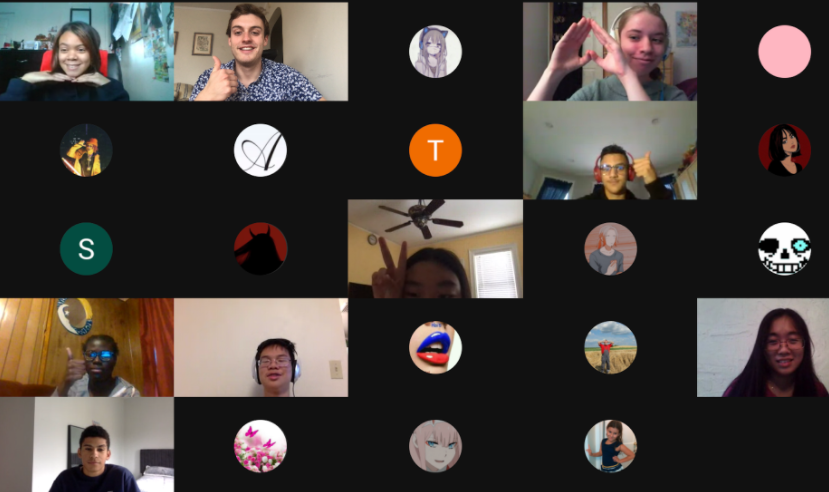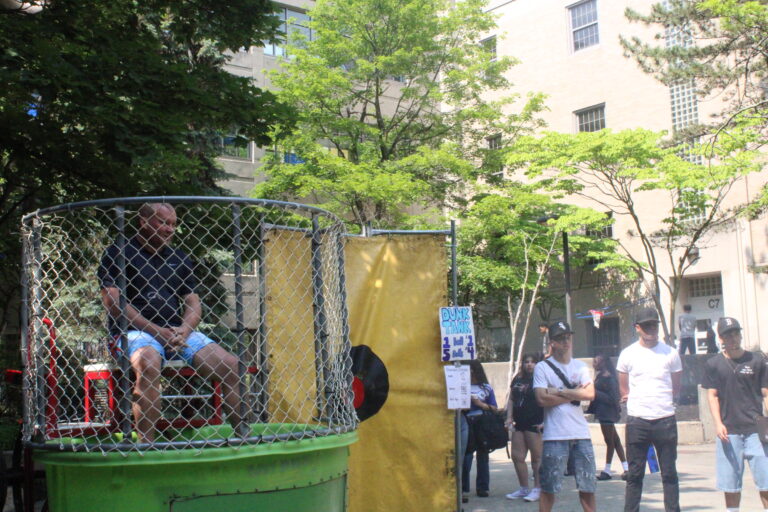
Robert Grinnell's period five Spanish class on google meet. Photo submitted by Grinnell.
Many schools around the world, including Malden High School, have started off the year with remote learning to protect students, teachers and other staff members from contracting COVID-19.
Although this may sound like an unfavorable way to start the year, it is certainly thought of as a safer method of schooling that allows the least amount of exposure and would hopefully reduce the number of coronavirus cases in the Malden area. This dramatic change in the way students learn has obviously imposed the need for constant adaptation, flexibility and patience, but what are the teachers’ opinions on this subject?
The teachers at Malden High School did not sign up for remote learning. They were used to the in-person student-to-teacher interactions. To continue teaching during this pandemic, teachers had to adapt at a quick pace to make this year work.
Remote learning didn’t come without challenges, however. Robin Doherty, an English teacher at Malden High School, said “because [the ninth graders are] new to the high school and it’s already nerve-racking going to go to high school nevermind now that it’s all virtual—it’s harder for [her] to get to know them. She has noticed that “a lot of them are really shy about the cameras for a variety of reasons, whether it’s because they feel uncomfortable and don’t know their peers, or they don’t want people to see the background of their homes.”
Doherty also thinks “it’s more of a challenge to build a sense of classroom community so [she is] telling them to unmute themselves and speak instead of just typing in the chat because otherwise [she would] be reading chats all day and [would] feel like [she is] having a conversation with [herself].”
She sees technology as an additional challenge. For example, “[she] was having technical issues and [she] had to have the kids leave the google meet and rejoin. [She] knows sometimes, kids can’t get on for whatever reason and that’s out of [their] hands. It’s definitely frustrating at times but [they] can’t control technology.”
In addition, Joseph Luongo, an art teacher at Malden High School said he uses breakout rooms when he wants to talk to someone privately. Luongo mainly uses this option to give feedback to students about their artwork. He heard teachers were using Nearpod a lot but he hasn’t tried it, although it is something he wants to look into. Usually, he uses QuickTime or screencastify to record his lessons. However, Luongo also makes use of Padlet, a website where students and teachers can communicate, collaborate and share their ideas through pictures and links. Moreover, he adds that “[teachers are] really trying [their] best to mimic or duplicate the in-person experience.”
Mary Ann Seager, another art teacher at Malden High School, further stated that “although [art teachers are] trying to use the new programs and [are] trying to become more tech-savvy, it is very important for [teachers] to maintain personal contact with students by doing demonstrations and having them show [them] their work because [they] don’t want to just do slides. It has to be an activity that [students] participate in. It’s a solo activity, it always has been, whether [a student] is at the studio by [themselves] or with other students, but [art teachers] are trying to maintain the studio atmosphere,” which they have found to be a challenge.
This year, Malden High School changed the schedule by dropping a period from the seven period rotation. There are now six class periods, with three classes a day in the new two day rotation schedule. Referred to as the “Blue and Gold” schedule, there is integration of asynchronous periods as well as an after school period called “What I Need” (WIN), similar to office hours. Ann Pember, a history and psychology teacher, said “[she likes] having a longer time with fewer classes per day. Everything takes longer in remote learning because of tech issues.” She was not sure how the block schedule would work because it was not something she had done before, so she thinks the current schedule “works much better” than the one the school had in-person.
Pember added that “[she] also likes that students have more time to do homework assignments. [Students] don’t have as much homework each night, they have two days to do an assignment, sometimes four if it’s over the weekend. [She] also [likes] starting a little bit later, at 8:15. [Her] students are reporting they are getting much more sleep than in previous years and some of that is because there’s not as much to do. There aren’t as many school activities but just having that half an hour difference does help with sleep.” Asynchronous time is also something that she appreciates, seeing it has a “great idea to have time built into [their] schedule for meetings and extra help.”
What do teachers think about the way students learn through remote learning? Has it changed the way students learn?
Katherine Haskell, a chemistry teacher at Malden High School, explained that this year, “[she thinks] that students are starting to take a little more ownership of their own learning because [teachers] aren’t there to make sure [students] are doing their work.”
In contrast to last year, she does not have the ability to ask students why they have not started an assignment, students have to take responsibility and do this themselves. She said that “the large majority of students are doing really well with that.” Even when students are getting kicked off or having internet issues, they are still reaching out and emailing her about what they may have missed. Haskell added that “[she’s] starting to see that students are really taking ownership of their own learning because [teachers] aren’t there to make sure they’re doing it.”
Many may recall how numerous schools around the nation were forced to close their doors and quickly adopt a new virtual method of schooling for their students. Malden’s decision to switch to remote learning was made by staff members in an effort to resume classes and end the year on a good note.
Jennifer Clapp, an English teacher at MHS voiced her opinion on the topic. She “[did not] think it was super successful last year.” She thinks MHS “got through it as best as possible, but [that] it wasn’t real remote learning,” comparing it to “crisis learning where [students and teachers] were trying to completely shift gears in the middle of the year to do what was needed to do.” She felt that MHS “did not have enough to plan or make sure everybody had the stuff they needed so it was really just reacting to everything that was happening.”
Clapp felt that “[school administrators] did this for the right reasons but they were really limiting [teachers] for what [they] could do with students. For example, [teachers] couldn’t do [their] own lesson planning, [they] couldn’t introduce a lot of new material and it meant that [the class] couldn’t really move forward. Teachers tried their best, students tried their best, everyone tried their best, but [Clapp thinks] it’s been way more successful this year.” This year has proven to be better than she thought it would be. Her class attendance has been steady, and she commented that everybody is doing their work.
Though many teachers, students and families are experiencing remote learning in different ways, most would all agree that it is not perfect.
Overall, teachers seem to prefer in-school learning to remote learning. They miss student-teacher interactions and hands-on activities, however, because of the circumstances, many seem to agree that it would be a better decision to stay home and make the most out of it.
Doherty, for example, is happy to be teaching remotely this year despite all the obstacles the situation had presented. Ideally, she would love to be in person in front of her students, but because of the virus she believes that is not possible. The reason she became a teacher was so she could make new connections with students, and now she has to learn how to do that through a screen.




